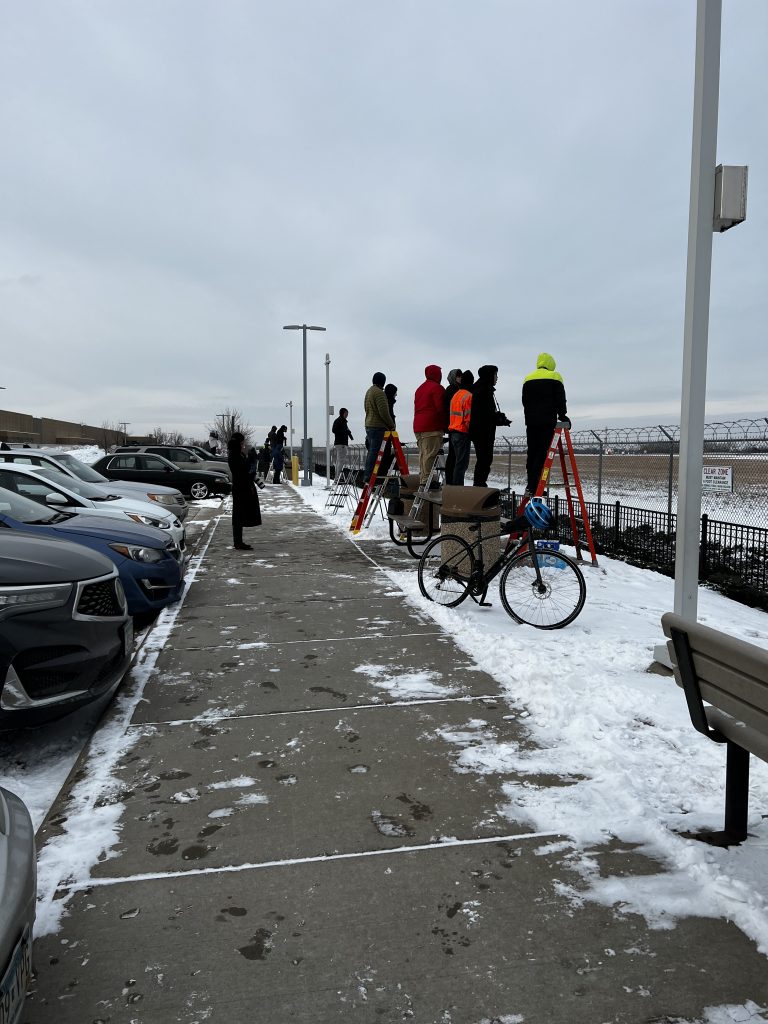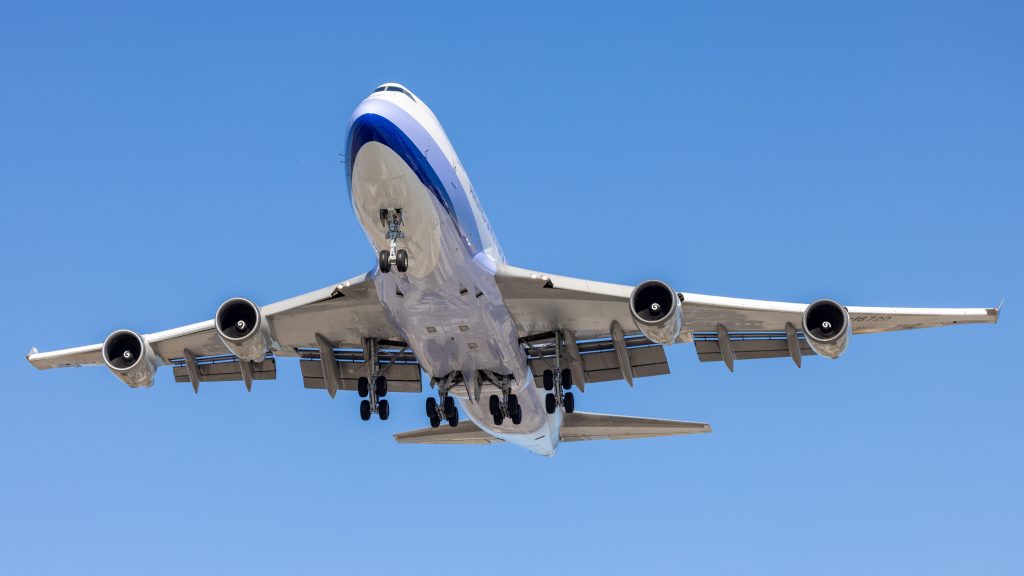Perhaps you have found your way down to your local airport and noticed folks there with cameras, telephoto lenses and ladders and wondered “what is this now?”. Perhaps a loved one has shared that they have started plane spotting and you are looking to learn more about what that entails.
Regardless of your reason for wanting to learn more about the hobby of plane spotting, you have found your way to the right place! Below I will try to dive in to what plane spotting even is, why one might participate in the hobby and provide a cursory overview of what those involved in the hobby may be looking for.
Definition
The dictionary definition of plane spotting is:
a person who observes, photographs, and catalogues aircraft as a hobby
Collins Library
This definition is surprisingly good, covering the main motives that drive most plane spotters: observe, photograph, and catalogue.
Why spot airplanes?
As is the way with most things, the exact reason an individual starts participating in plane spotting will vary. That said, there tends to be three major buckets of folks out there: observers, photographers and cataloguers.
The Observer
Most akin to the standard bird watcher, spotters who participate in the hobby solely to observe are generally just interested in aviation in general. You will find the observer with binoculars rather than a camera, perhaps a radio scanner and typically nothing more. The goal of the observer is just to be present and witness aircraft as they operate in and around the airfield.
Often observers are generally interested in aviation but lack the ability, motive or health to participate any further (such as acquiring a pilot’s certificate, for example). They are generally satisfied with just watching the aircraft go by and perhaps seeing something out of the ordinary (a go around, for example).
The Photographer
Next up is the photographer. This type of plane spotter is often also generally interested in aviation, but they tend to also have an interest in photography as well. These are the folks who you will see at airports special aircraft are due in, carrying cameras, big lenses and perhaps ladders to see over obstacles.

The goal of the photographer is, more of than not, capturing compelling photographs, much like any photographer, really. Depending on what the individual is after, this may range from simply capturing any aircraft they come across, to being extremely selective about particular rare airframes or even registration numbers. You will often find specialities within photography where the desire is to capture the full aircraft, others might be after an artistic approach.
Regardless of what exact type of photos the photographer produces, generally the most enjoyable part (aside from seeing the aircraft themselves) is sharing the photographs they captured during the day of spotting. Often the photographer will be part of spotting groups to share and critique the photos they produce, especially of rare of interesting aircraft.
The Cataloguer
Lastly, the cataloguer. Similar to the observer and the photographer, the cataloguer is often after the fix of participating in or near aviation in general. The main difference between the cataloguer and the others, though, is that the cataloguer tends to be after “collecting” aircraft more so than just watching or just photographing.
Often the cataloguer will either photograph or just simply record aircraft they have observed during their time spotting. This could be a journal, on a website, or perhaps by way of photograph. The end goal is to catch them all, so to speak, by seeing one of each type of aircraft perhaps, or capturing all of the unique aircraft registration numbers (that number on the tail of the aircraft).
The primary motive here is being able to say “I have seen all of the Delta Airbus aircraft” or “I have seen every type of aircraft used by the US Air Force”.
What do spotters look for?
With the three major types of spotters out of the way, let’s discuss what makes a spotter make the drive down to the airport.
The most common thing spotters look for is rare aircraft. There are types of aircraft, such as the Antonov AN-225 ‘Mryia’ that are wholly unique. There exists only one operational AN-225, so getting to see this aircraft, or others that are similarly rare, are a treat for any plane spotter.
Beyond this extreme level of rarity, spotters will usually be interested in generally rare aircraft, like those of an airline that they do not typically see at their local airport, aircraft that have a unique paint job (or “livery”), and or very large or very small aircraft. Most often what is considered rare is only so within the context of where that spotter does their spotting most often, with the exception of the extremely rare aircraft like the AN-225 above.

In addition to the aircraft themselves, spotters will often look for interesting conditions as well. This can range for unusual runway configurations (landing one way vs. another, or using a runway that the airport doesn’t always use), unusual events like go arounds (when a pilot aborts a landing and tries again) or other rare events like emergencies and the like.
Truly, the exact thing a spotter is after can vary from spotter to spotter and more often than not, from day to day. Just to give you some examples of what spotters might look for I have compiled a few things below:
- Military aircraft
- Very large aircraft
- General aviation aircraft
- Airport operations
- Emergencies / damaged aircraft
- Unusual operations (go arounds, rejected take offs)
How is the hobby practiced?
More often than not, plane spotting as a hobby is practiced quite simply by being physically present at an airport or airfield. Some airports have areas dedicated to the hobby where you will often find most of the spotters. Other airports may not be as “friendly” resulting in spotters needing creative solutions. Regardless though, much of the spotting hobby happens where the airplanes are: airports.
A natural extension of being at the airport is traveling to other airports specifically to watch airplanes. The benefits are twofold 1) the spotter will probably fly to get to the airport (yay we want to fly!) and 2) the other airport will often offer different views, angles and most importantly, different airlines and aircraft!
That isn’t to say that the hobby must be practiced at or near an airport. Some spotters specialize in spotting aircraft in flight. These types of spotters can practice their hobby anywhere there is a clear view up to the sky.
What else should I know?
It is worth noting, that not everybody looks fondly upon plane spotters. In a post 9/11 world, some people are, understandably, hesitant when they see people with binoculars, big camera lenses and the like in or around airports.
Depending on where one practices the hobby, the general public and airport personnel may be less than accommodating resulting in run-ins with airport security or law enforcement. Plane spotting from public places is legal in the United States, however spotters must be cautious and considerate and, if prompted by airport security or law enforcement, leave their spotting area. That said, it is important that spotters remain in areas that are designated for the purposes of spotting or, in the absence of such a spot, remain in a public location.
It is not all doom and gloom though – airports are increasingly welcoming spotters by way of airport watch organizations offering privileged access at the cost of a background check and the ask that you report potential security threats as you go about your time spotting at the airfield (Chicago O’Hare offers one of the most extensive airport watch programs). Other airports are opening dedicated areas for spotters with very nice amenities (Founder’s Plaza at Dallas-Fort Worth is a great example).
Most importantly, now that you know more about the hobby, you can assist is in dispelling the myths around plane spotting being a bad thing. After all, there are only so many security personnel and law enforcement personnel, why not leverage folks who are already keenly watching airport operations to help keep things safe?
Conclusion
Plane spotting is a fantastic hobby – it provides an outlet for folks who want to participate in aviation, it provides an excuse to get out and about (and even travel sometimes) and offers a great sense of community and belonging among other aviation enthusiasts.
So now that you know all about plane spotting, say “Hi” the next time you see one of us atop a ladder pining for that perfect shot of a rare airplane taking off!